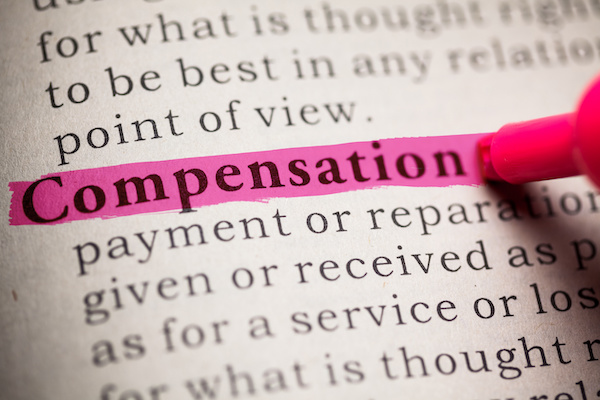Calculating Damages: How Compensation Is Determined In Personal Injury Cases

Financial damages aim to cover everything from medical bills and lost income to harder-to-quantify impacts like pain and suffering. However, determining appropriate compensation levels involves examining many intricate, interacting factors. How do you make sure you recoup adequate damages?
While no formula exists, guidelines apply across personal injury cases. Becoming informed on these rules and typical damage categories gives you greater power to estimate and negotiate fair settlements. It also allows your attorney to maximize recovery if heading to trial.
This article outlines the essential components to help you benchmark potential values. Use this guide as a resource when meeting with lawyers, whether you're looking for a personal injury attorney in Cleveland or elsewhere.
Types Of Damages
Courts typically categorize damages into economic and non-economic losses. Economic losses are tangible, like medical bills or lost wages. Non-economic losses are intangible, such as pain and suffering. You may recover both.Economic Damages
Economic damages compensate accident victims for quantifiable monetary losses. These include:Medical Expenses
Courts award compensation for all medical costs related to the injury, both current and future. This covers hospital bills, long-term care, therapy, prescription medications, assistive devices like wheelchairs, and more.Lost Income
If the injury prevented you from working for a period, you can recover lost wages. The court calculates this based on your weekly earnings before the incident. Missed raises and retirement benefits may also qualify.
Loss Of Earning Capacity
Sometimes, injuries leave permanent disabilities, limiting one's ability to work long-term. Damages account for diminished future income and benefits. Vocational experts often analyze earning capacity.Other Costs
Compensation can further encompass damaged property, costs of household services you can no longer perform, and more accident-related expenses. Documentation is key.Documenting losses is crucial when seeking financial compensation. Be sure to keep organized records related to medical expenses, lost earnings, property damage, and other monetary impacts resulting from the accident.
No amount of money can undo hardship from devastating injuries tangible damages compensate, at minimum, tangible losses. With perseverance and a strong case, justice through fair reimbursement can help you move forward.
Non-Economic Damages
Non-economic damages account for the more intangible impacts of injuries. These include:Pain And Suffering
This covers physical and mental anguish from the injury itself and treatment procedures. The type of harm, severity, and duration affect valuations.Loss Of Consortium
Injuries strain personal relationships. Damages account for reduced intimacy, companionship, and family support. A spouse or child may file their loss of consortium claim.Disfigurement
Scarring and loss of body parts can significantly impact well-being and self-image. Disfigurement warrants additional compensation above medical costs.Emotional Distress
Serious injuries frequently cause psychological issues like depression, anxiety, PTSD, avoidance of activities, or shortened life expectancy. Accounting for mental health factors expands damages.Punitive Damages
In exceptional cases of gross negligence or intentional harm, courts impose punitive (extra) damages to punish defendants. These further acknowledge the loss and deter similar conduct.Quantifying intangible harms inherently proves challenging, but some guiding principles apply. Generally, more severe injuries that affect the life activities warrant higher non-economic damages.
Though money cannot directly heal, fair compensation symbolizes admitting wrongdoings. It facilitates access to resources to incrementally reclaim strength, purpose, and even hope.
Calculating The Final Figure
Many variables affect the ultimate compensation amount. Defense teams work to minimize totals, while injury lawyers aim to maximize them. Both sides present evidence to support damages calculations most favorable for their position. Things taken into account include:Liability Percentage
In states with comparative negligence rules, courts reduce damages by the percentage the injured person was responsible for causing their own accident. This aims to prevent unjust enrichment from a person's own faults.Past Jury Verdicts
Judges and lawyers examine compensation amounts awarded in similar previous cases. These verdicts establish precedence on possible damages ranges.Expert Testimony
Accident analysts, doctors, vocational experts, financial analysts, and other specialists often provide insight into the full impact and costs of the plaintiff's injuries. Their testimonies carry significant weight in the outcome.Negotiated Settlements
The vast majority of cases settle out of court through private negotiations before trial. The hypothetical verdict value drives these settlements, discounted by risks of losing in court and saving legal expenses.Arriving at suitable financial compensation involves navigating a complex web of factors, perspectives, and motivations. Though certainly not without challenges, taking a stand for justice helps regain personal power amid hardship.
Final Thoughts
Understanding what courts allow you to claim is essential when filing an injury lawsuit or settling directly with insurers. Discuss your entire experience with an attorney so no stone goes unturned when recouping what you deserve. With sound evidence and the law on your side, fair compensation can help you move forward.Do You Need An Attorney?
If so, post a short summary of your legal needs to our site and let attorneys submit applications to fulfill those needs. No time wasted, no hassle, no confusion, no cost.

